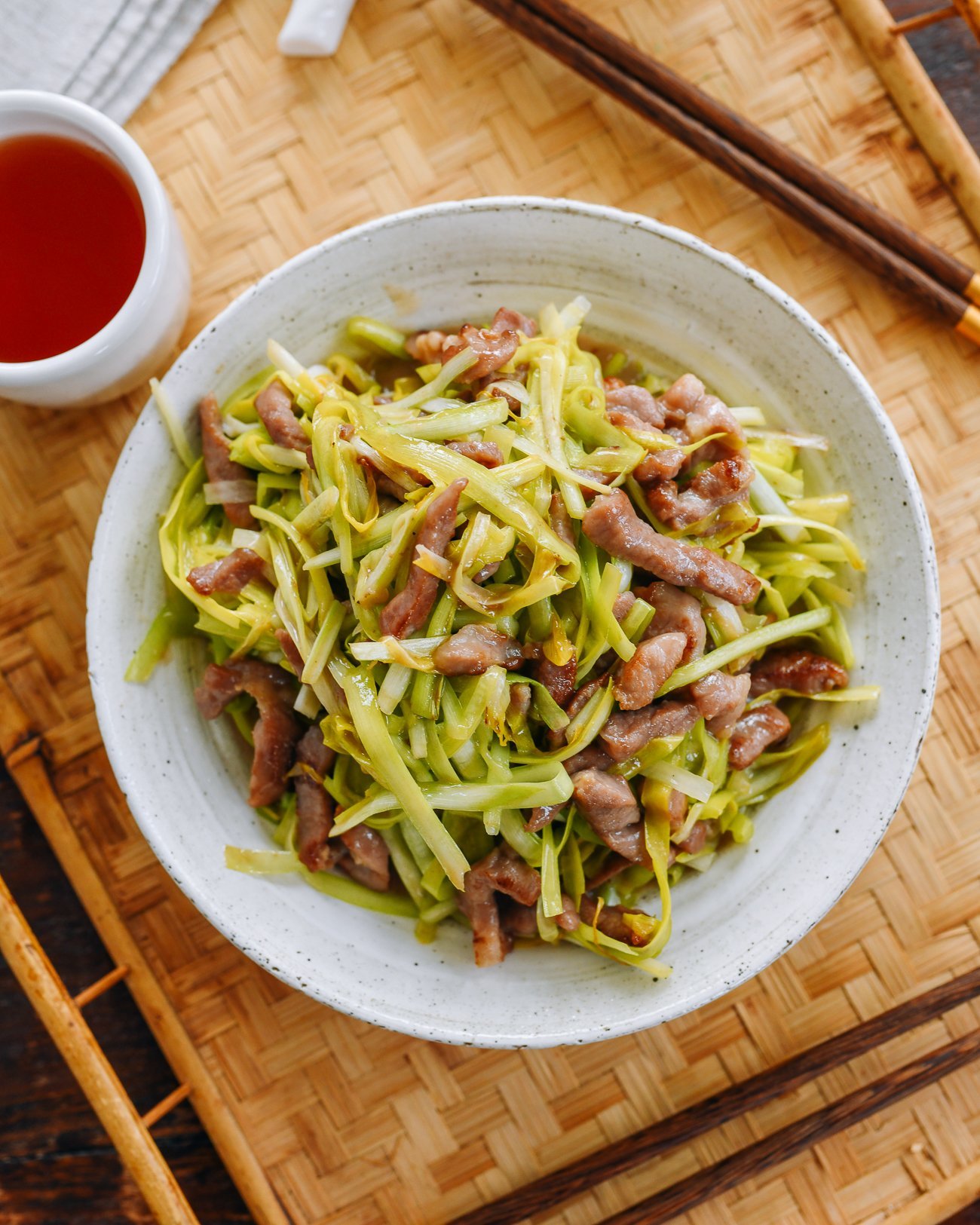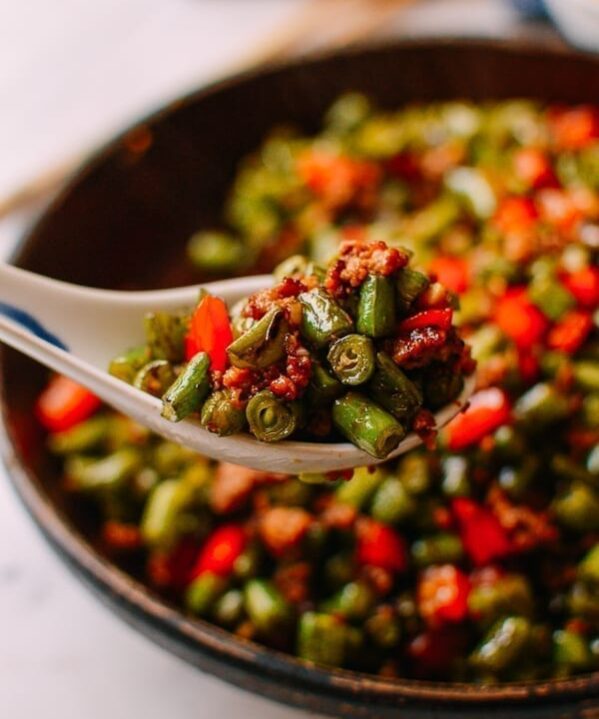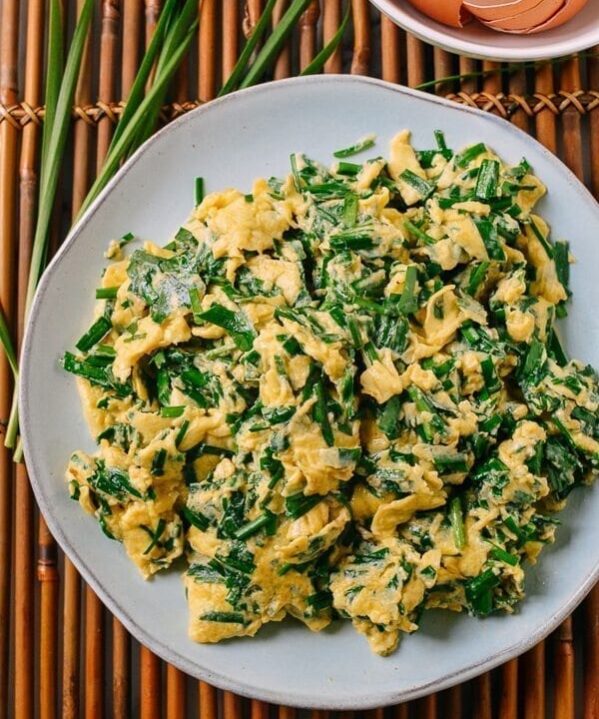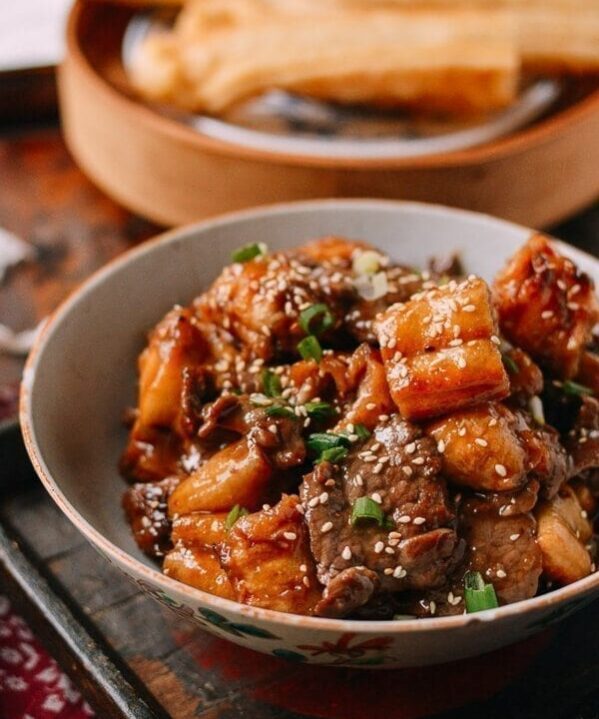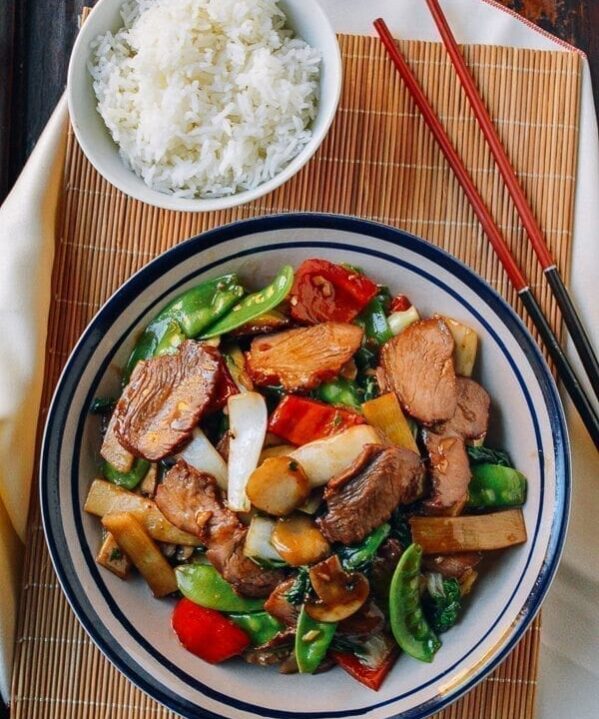This recipe for stir-fried Chinese yellow chives with pork is especially tasty this time of year—spring and summer—when delicate, mild-flavored yellow garlic chives are in season.
It’s easy to prepare, so if you have access to yellow chives, give this seasonal dish a try!
What Are Yellow Chives?
Before we talk about yellow chives, let’s start with what Chinese chives are. Chinese chives, also known as garlic chives (韭菜 – jiǔcài in Mandarin), are meatier than the standard chives you may be more familiar with. They have broader, flat leaves, and aren’t hollow like regular chives.
They also have more of a (you guessed it) garlicky flavor, rather than the onion-y flavor of regular chives. Usually consumed more as a vegetable than a herb, you’ll find them in relatively large bunches.
Yellow chives, or jiǔ huáng (韭黄) in Mandarin (sometimes called jiǔ cài huáng/韭菜黄) are basically Chinese garlic chives that are grown without light, similar to how you might grow white asparagus.
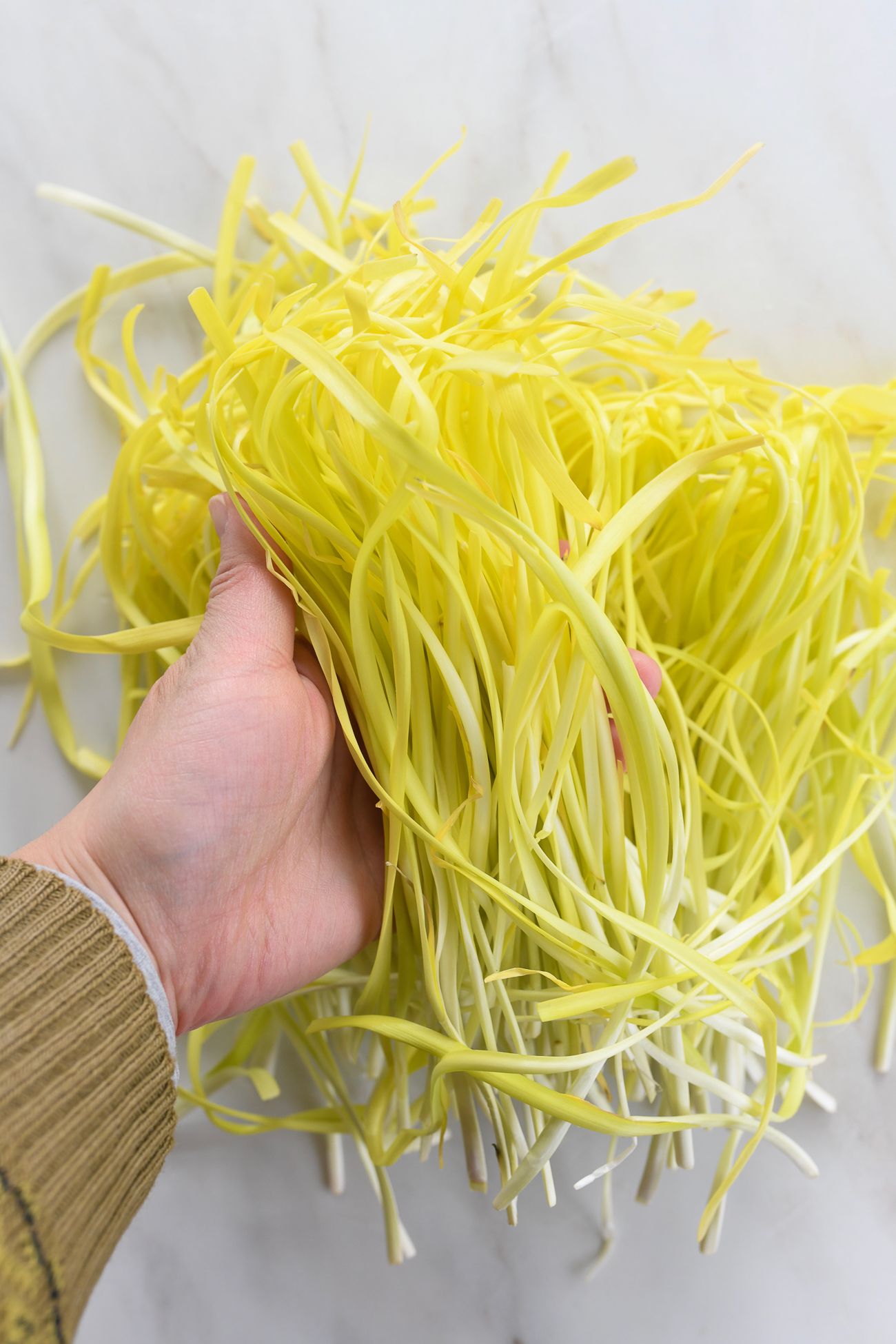
In Cantonese, it’s called gow wang, and it’s often used in Cantonese noodle and seafood dishes. It has the same basic flavor as the green garlic chives grown in full sun, but are more mild and delicate (characteristic of Cantonese cooking).
These chives can also be quite expensive and a bit harder to find, but it’s more likely to show up around this time of year in a well-stocked Chinese market.
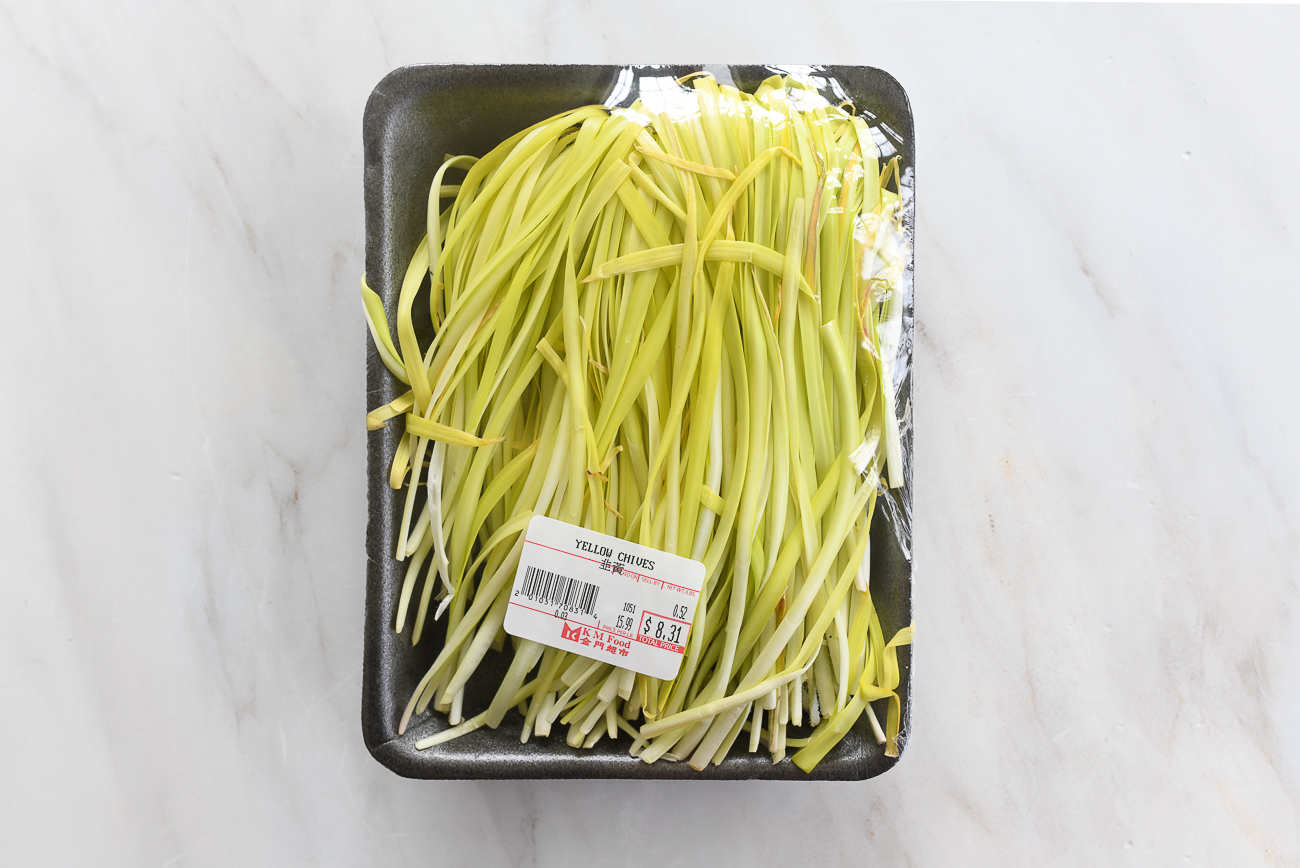
Look for them near the green Chinese chives in the produce section—they’re usually closeby. We always grow Chinese chives in our garden. So this may be the year we try covering a cluster of them to grow without light!
How to Cook Chinese Yellow Chives
One of my favorite ways to cook yellow chives is with shredded pork. Chicken or eggs are also common. But there’s no reason why you can’t use beef, shrimp, tofu, or any other vegetables you have in your refrigerator to stir-fry them with.
Yellow chives are generally very clean and only need a quick soak and rinse in cold water. Let them drip dry and cut them into small lengths.
Being more delicate, the chives are quite tender, so we add them as the last ingredient to the wok, after the sauce is simmering. Don’t overcook them!
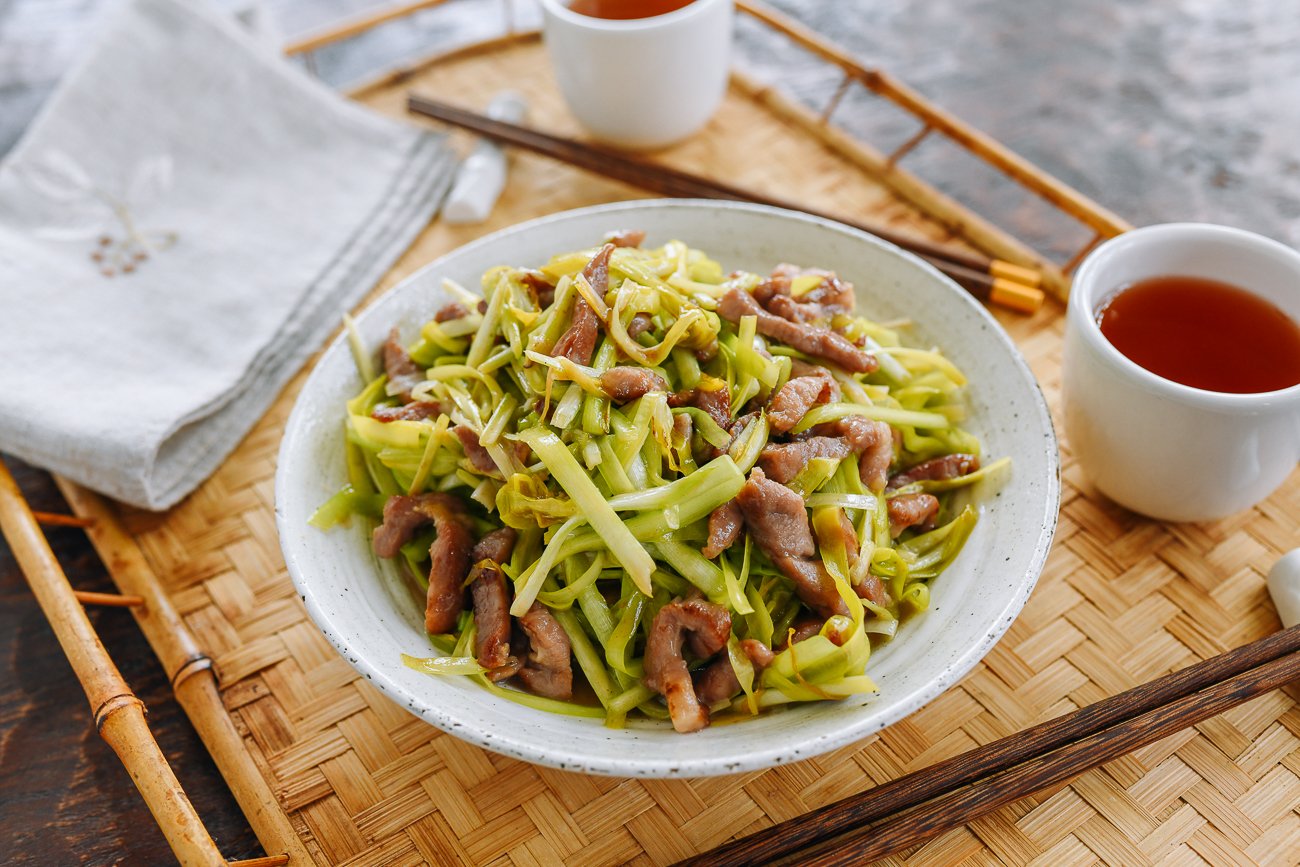
If using green Chinese chives instead, you can stir-fry them in the wok first before adding the rest of the seared pork and sauce, since they need slightly longer cooking.
Other Recipes for Chinese Garlic Chives
Here are some other recipes on our blog that feature Chinese chives, in which you can sub yellow chives:
Long Life Noodles (Yi Mein): Use yellow chives in place of the green ones to bring this dish up a notch. You will often see yellow chives in this dish at Cantonese-style banquet meals.
Chinese Chives with Eggs: Using yellow chives in this dish will give it a more melt-in-your-mouth, tender texture with the scrambled eggs.
Spiced Tofu Stir-fry with Garlic Chives: Easy upgrade this recipe with delicate yellow chives; just remember to reduce the stir-frying time after you add the chives, as they cook very quickly.
Recipe Instructions
In a medium bowl, velvet the pork by combining the pork strips with the water, cornstarch, vegetable oil, oyster sauce, and baking soda. Mix until uniform and the pork is completely coated. Set aside for 1 hour or overnight in the refrigerator.
In a bowl, make the sauce mixture by combining the chicken stock, clear rice wine, oyster sauce, soy sauce, sesame oil, salt, sugar, and white pepper. Set aside.
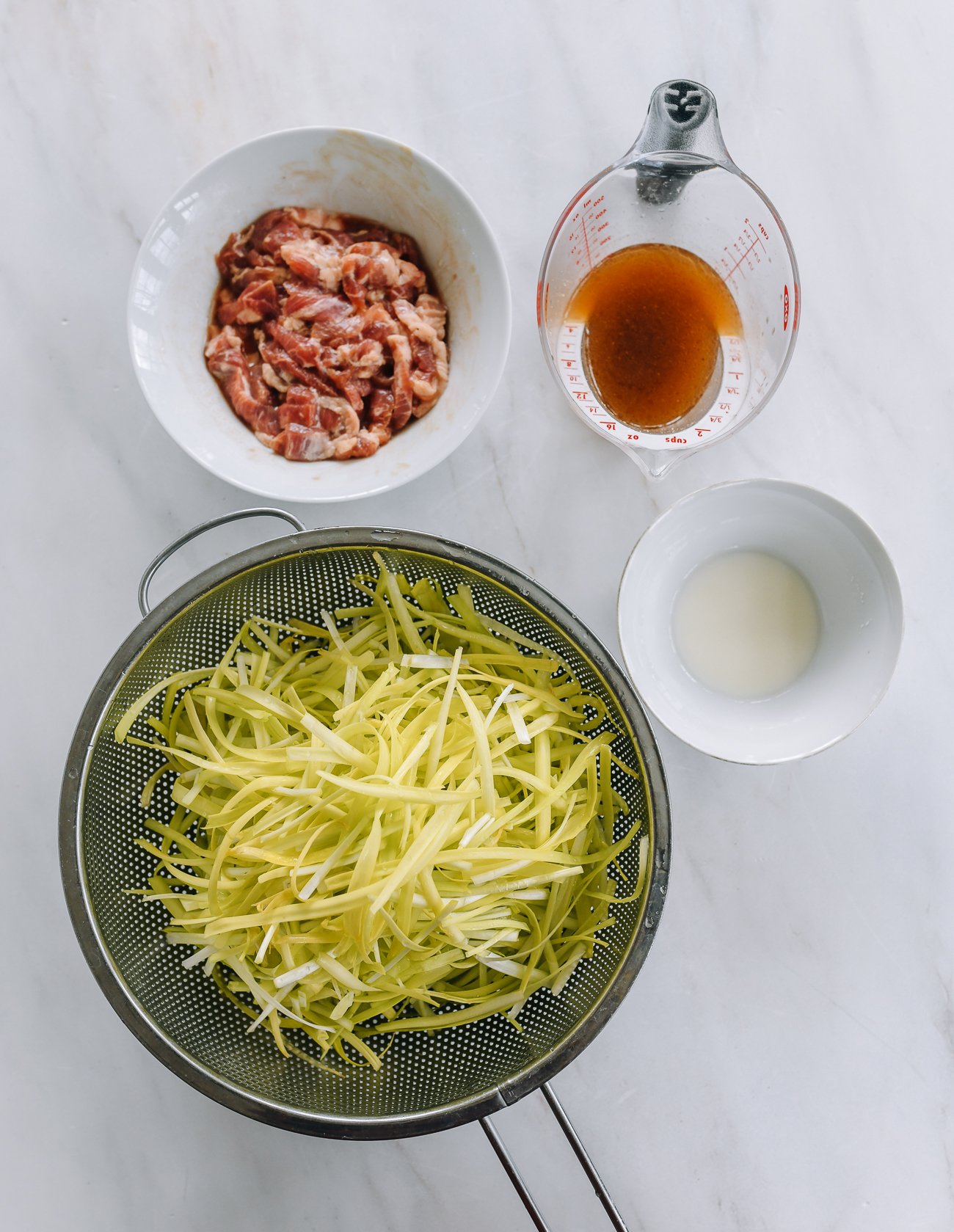
Heat your wok until just smoking and add the oil around the perimeter of the wok. Add the marinated pork (it should be at room temperature) to the wok in one layer, and sear for 1 minute. Stir-fry the pork in the hot wok for another 30 seconds, or until the pork is mostly cooked.
Still over high heat, pour in the pre-mixed sauce to deglaze the wok. Let everything come up to a boil.
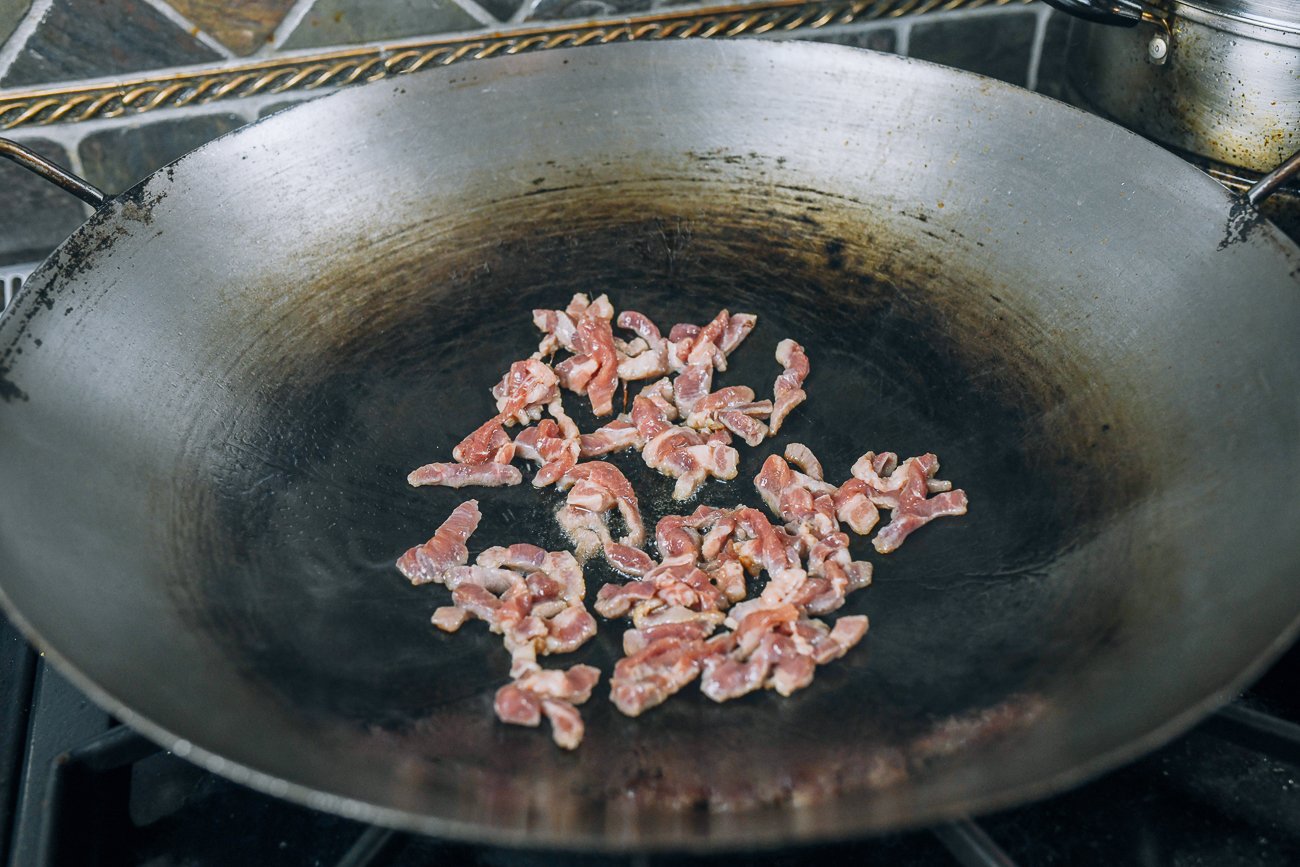
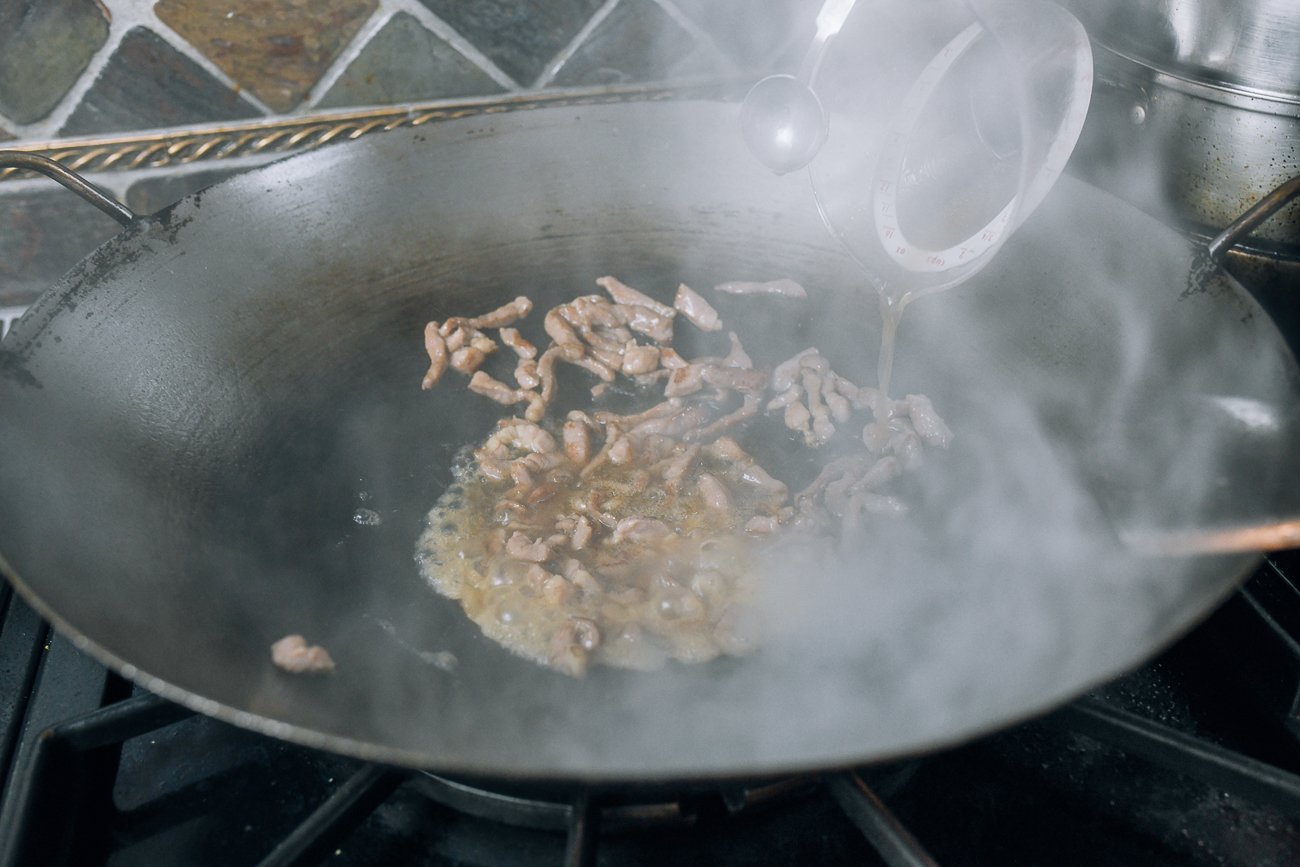
Slowly add half of the cornstarch slurry while stirring constantly to thicken the sauce.
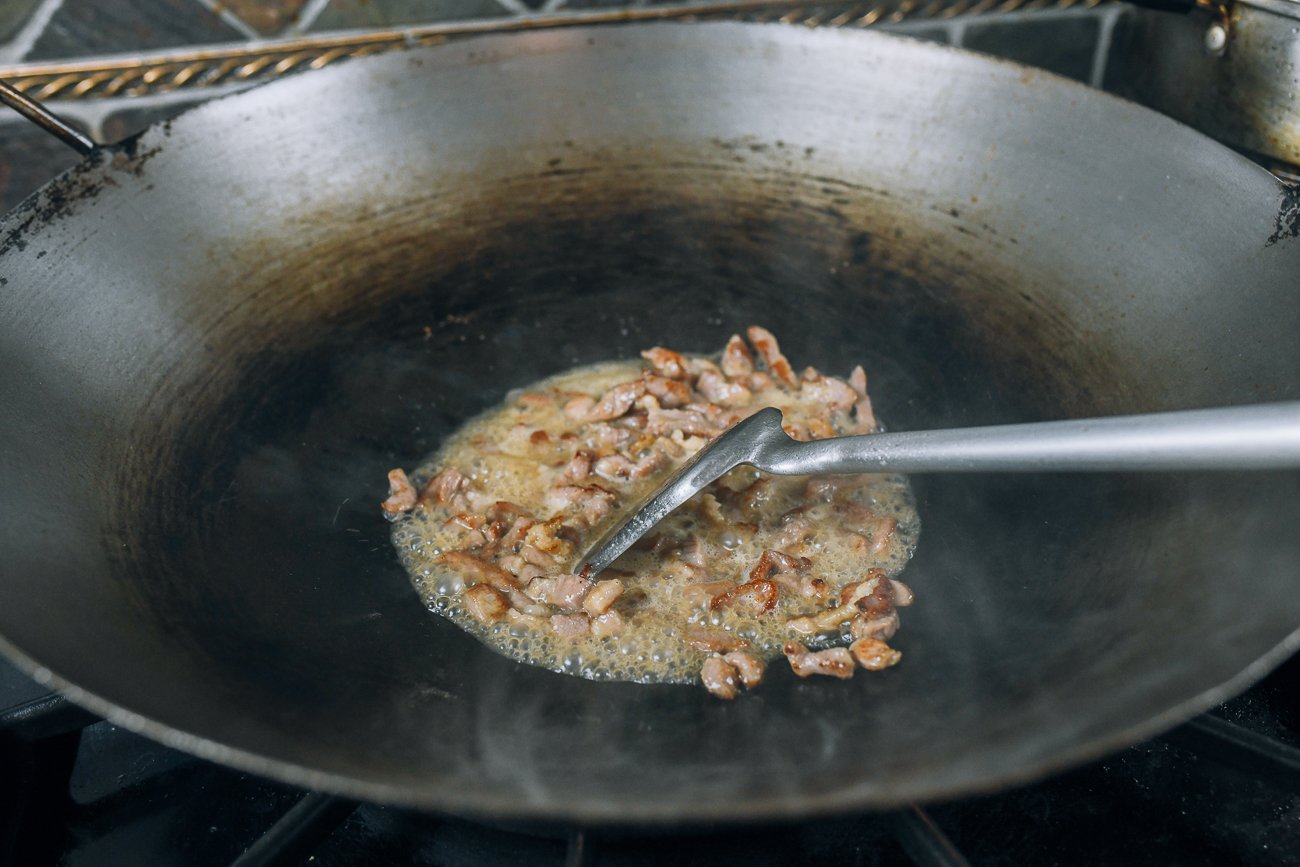
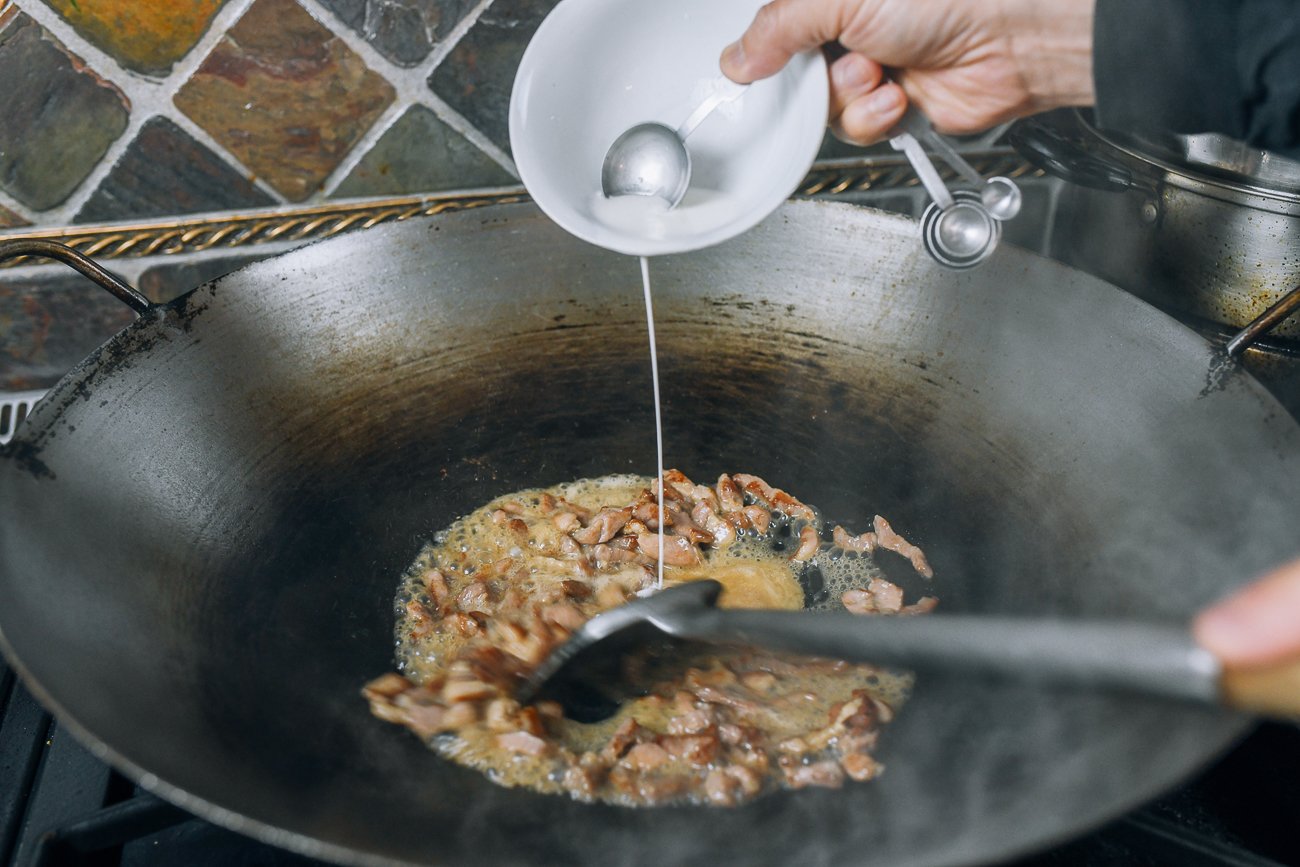
Next, stir in the yellow chives. Mix well and continue to stir-fry for another minute. Add more cornstarch slurry to thicken up the sauce if needed, and stir for another 15 seconds.
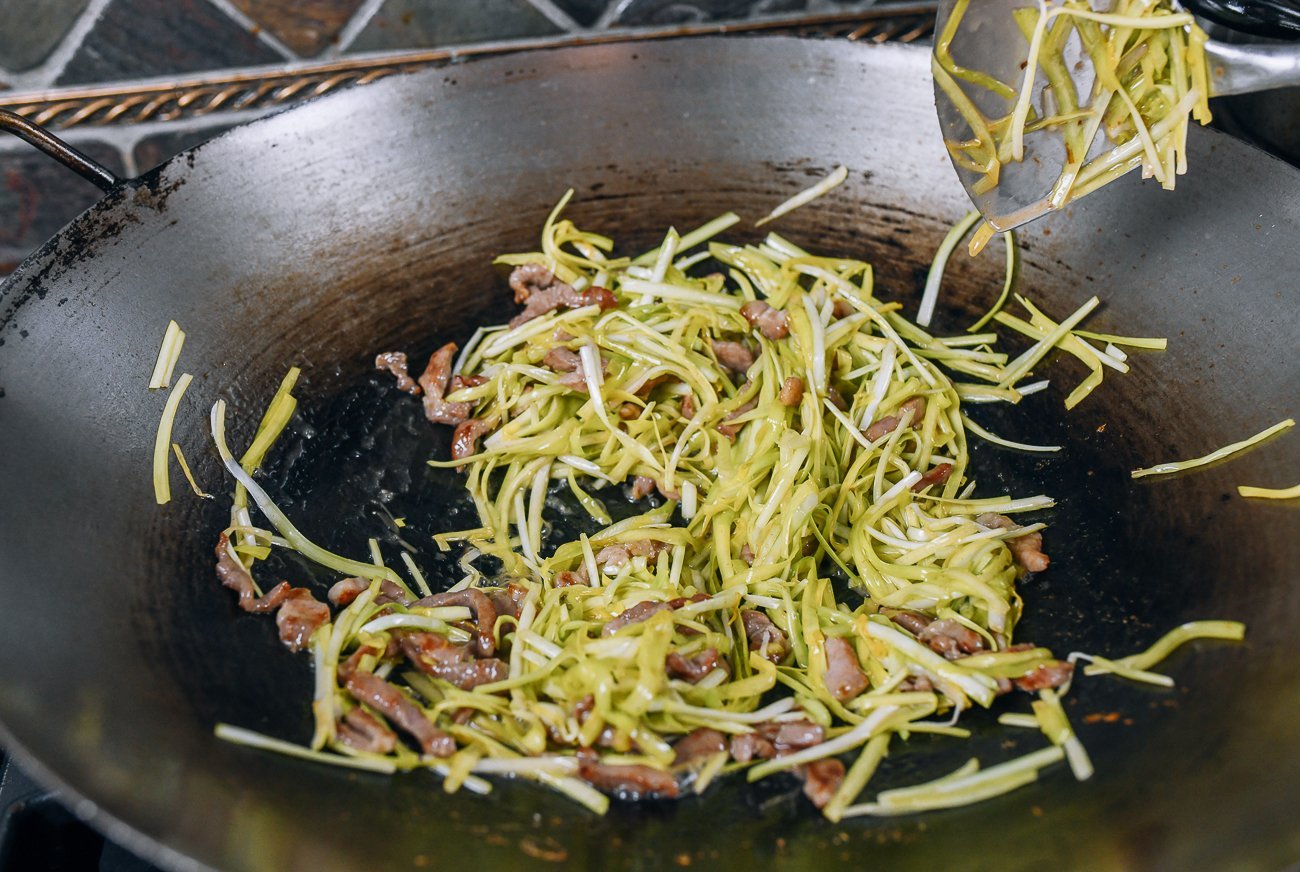
Serve!
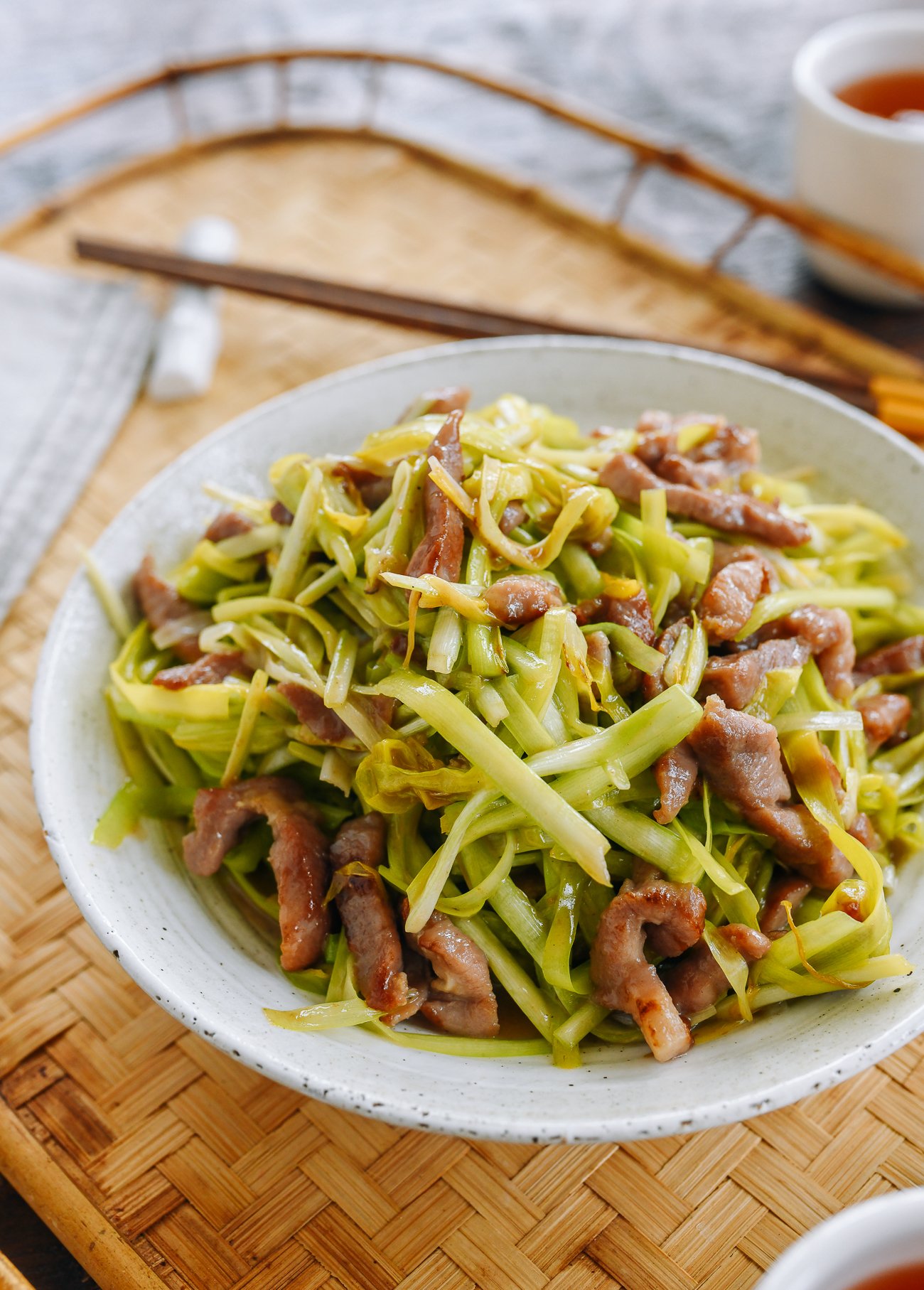
Stir-fried Chinese Yellow Chives with Pork

Ingredients
For the pork:
- 8 ounces pork shoulder (or pork loin, partially frozen and cut into thin strips)
- 1 tablespoon water
- 1 teaspoon cornstarch
- 2 teaspoons vegetable oil
- 2 teaspoons oyster sauce
- 1/8 teaspoon baking soda
For the rest of the dish:
- 2/3 cup low-sodium chicken stock
- 1 teaspoon clear rice wine
- 1 teaspoon oyster sauce
- 1 teaspoon soy sauce
- 1/4 teaspoon sesame oil
- 1/2 teaspoon salt
- 1/8 teaspoon sugar
- 1/8 teaspoon ground white pepper (or to taste)
- 1 1/2 tablespoons vegetable oil (or any neutral oil)
- 1 1/2 teaspoons cornstarch (mixed into a slurry with 2 teaspoons water)
- 8 ounces Chinese yellow chives (washed, drained, and cut into 2 1/2-inch/6 cm lengths)
Instructions
- In a medium bowl, velvet the pork by combining the pork strips with the water, cornstarch, vegetable oil, oyster sauce, and baking soda. Mix until uniform and the pork is completely coated. Set aside for 1 hour or overnight in the refrigerator.
- In a bowl, make the sauce mixture by combining the chicken stock, clear rice wine, oyster sauce, soy sauce, sesame oil, salt, sugar, and white pepper. Set aside.
- Heat your wok until just smoking and add the oil around the perimeter of the wok. Add the marinated pork (it should be at room temperature) to the wok in one layer, and sear for 1 minute. Stir-fry the pork in the hot wok for another 30 seconds, or until the pork is mostly cooked.
- Still over high heat, pour in the pre-mixed sauce to deglaze the wok. Let everything come up to a boil and slowly add half of the cornstarch slurry while stirring constantly to thicken the sauce.
- Next, stir in the yellow chives. Mix well and continue to stir-fry for another minute. Add more cornstarch slurry to thicken up the sauce if needed, and stir for another 15 seconds. Serve!
